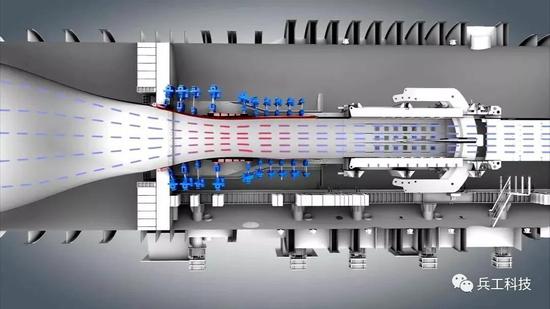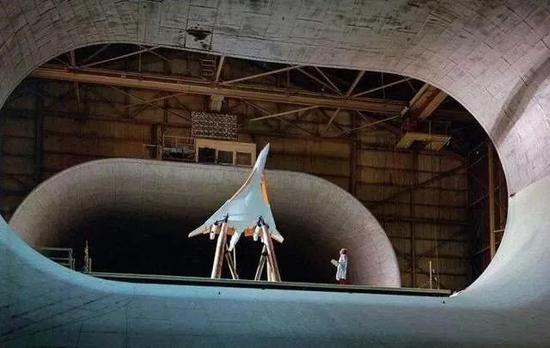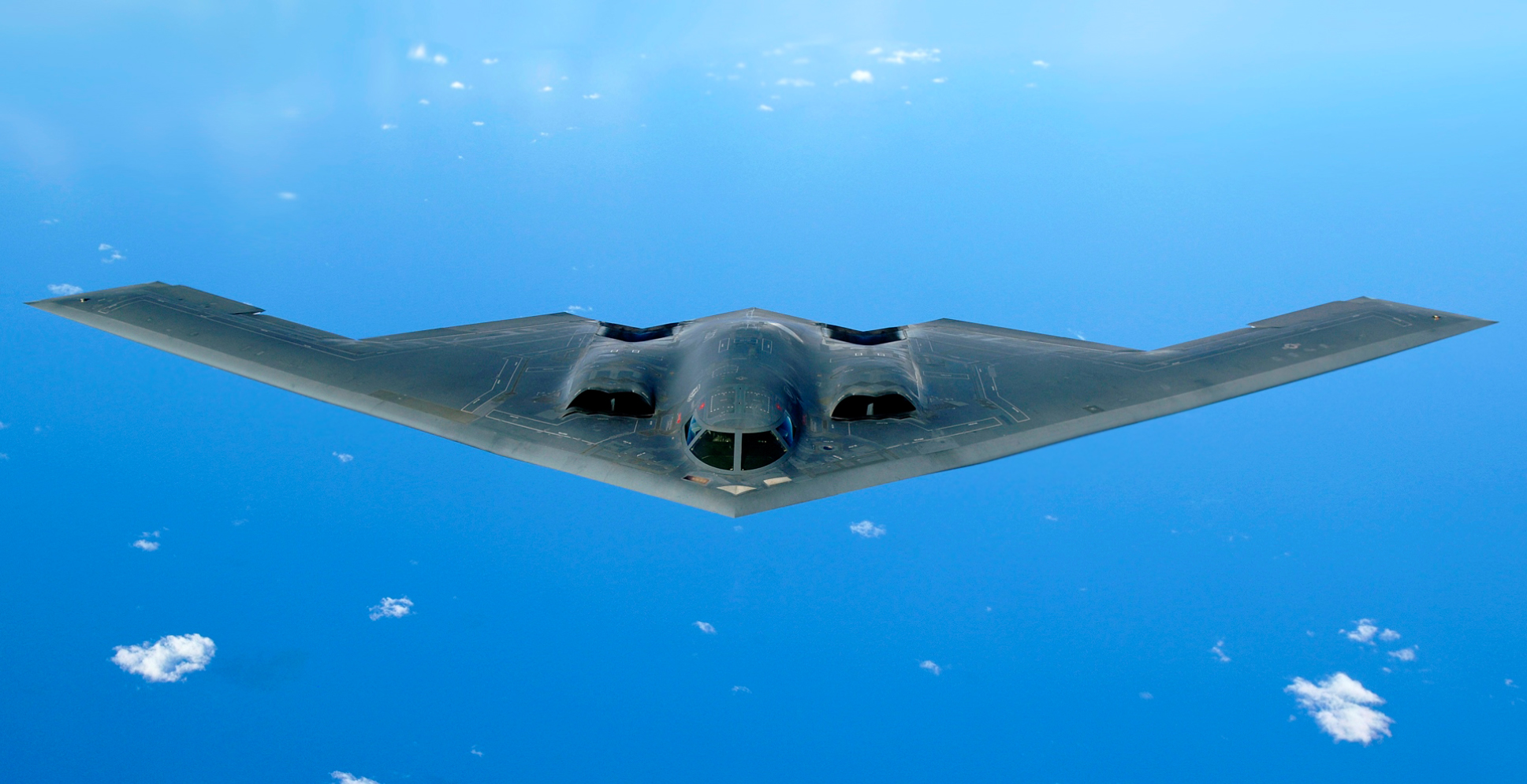https://mil.news.sina.com.cn/zhengming/2020-06-27/doc-iircuyvk0648786.shtml
中国6代战机究竟长啥样:机头尖锐无水平尾翼
中国6代战机究竟长啥样:机头尖锐无水平尾翼
4,428
2020年5月26日,中国航空工业集团公司空气动力研究院(简称航空工业气动院)的官方微信公众号发表了一篇报道,该院设计建造的FL-62新型连续式跨声速风洞,首次承接了某新型号飞机研制试验。本次试验的成功标志着FL-62风洞已具备承接型号试验的能力,大国重器已随时准备好为国家各类飞行器研制贡献力量。另据外媒报道,FL-62风洞刚开始运行,就对一架未公开的新型飞机进行了测试,外媒猜测这架飞机很可能是中国的国产第六代战斗机,比目前中国最先进的歼-20和歼-31都更先进。那么,FL-62究竟是一个怎样的新型风洞?它测试的真的是中国的第六代战斗机吗?

航空工业气动院FL-62新型跨声速风洞
FL-62风洞为连续式、单回流高速风洞,主要用于型号试验、预先研究等试验任务。该风洞能够满足未来一段时期内各类先进型号飞行器的研制对常规测力测压试验的需要,其综合试验能力赶超国际同类风洞。其主要性能指标如下:试验段尺寸:2.4m×2.4m;马赫数范围:0.3~1.6;总压范围:0.03~0.4Mpa;总温范围:293~333K;最大雷诺数:1.3×107。
FL-62风洞具有多个可更换试验段,可以最大程度地满足不同类型试验需求。这座6620吨、17000立方米的FL-62风洞于2012年获准建造,位于中国东北辽宁省沈阳市,是中国第一座大型连续跨声速风洞。这是对中国航空业至关重要的基础性战略设施。

风洞剖面示意图
外界为什么对FL-62连续式跨声速风洞如此关注,并称之为“中国第六代战斗机研制的关键试验设备”?
连续式跨声速风洞,是现代战斗机研制重要的基础设施。例如美国NASA著名的4.9米连续式跨声速风洞,在业内就大名鼎鼎,它曾为美国研制多代跨声速的超声速战斗机做出重要的贡献。我国要研制新一代战斗机,必然是超声速的,它必然涉及到亚声速、跨声速和超声速三个主要速度范围区间,其中飞机的跨声速性能十分关键,很多战机气动设计存在问题,在亚声速和超声速领域飞行十分稳定,但一到了复杂的跨声速领域,就会出现颤振、抖动、飞行品质下降甚至关键力学结构性能下降的问题,因此风洞试验的测压、测力试验数据以及研究成果,对于新研制飞机有针对性地优化跨声速区间性能,改正设计缺陷,有非常重要的意义。
据悉,FL-62能够快速建立超声速流场,在压缩机不完全停车状态下,通过更换试验条件,精准控制马赫数。还可以用来试验矢量推力、气动弹性、动力模拟、多体干扰和流动显示灯数据。军事专家们认为,借助这些数据,新一代战斗机的设计人员可以优化该机的空气动力学设计,使其在速度、航程、机动性和隐身性方面有更好的性能。同时,更先进的风洞也可能缩短战机研发时间,因为它生成的数据将更准确。

新型风洞内采用尾撑模式试验的新颖气动布局的风洞模型,外界猜测它就是六代机方案模型
根据战斗机研发的科研规律,一贯是服役一代、研制一代、预研一代,从目前看,歼-20第五代战斗机的早期型号版本已经进入了小批量领先试用阶段,接近于定型。因此,第六代战斗机的预研也肯定要提上议事日程。第六代战斗机的预研,主要是分解成各项关键技术同时进行分别的预研攻关,而总体气动设计也是其中一项关键技术之一。根据战斗机设计的一般程序,研究人员会根据第六代战斗机的气动设计理念,分批设计出各种不同构型的“新一代战斗机总体气动设计方案”,然后将这些方案制作成风洞模型,在风洞试验设备上吹风试验获得数据并进行分析,即所谓的吹风选型。
因此从FL-62风洞上出现的外形新颖的风洞模型来推测,我国第六代战斗机的总体气动设计预研工作已经展开,进行吹风试验的设计方案肯定不会只有这一个,根据经验,肯定还有几十、上百甚至更多的方案需要进行吹风试验,通过相当长的时间,来最终确定要研制的新机所采用的最佳气动设计。

洛马公司NGAD第六代战斗机设计方案,高度翼身融合体、取消尾翼是其气动外形设计方案的主要特征
而仅从那个外形新颖的风洞模型,其实也能看出一些东西,首先该风洞模型采用尾撑试验模式,机翼后掠角很大,属于高速气动外形,机头尖锐,与欧洲著名的“协和”客机有相似之处,这也是高速气动外形的特征之一。该机翼身融合设计非常明显,看不到有水平尾翼,整体飞机仰视布局接近于飞翼。而从目前公布的第六代战斗机方案来看,取消尾翼或者平尾,采用类似或接近飞翼的翼身融合体布局是一个典型的共同特征,这种设计可以达到隐身性能更佳、速度性能更佳、阻力更小的目的。由此看来,世界目前正在研制六代机的航空强国在飞机总体气动布局设计上思路几乎一致——都是无尾或者无平尾、机头前向进一步简化、进一步翼身融合。所以说FL-62那个外形新颖的风洞模型,确实有可能是新一代战斗机的风洞试验方案模型之一。
免责声明:以上内容为网友在新浪军事争鸣栏目上传并发布,仅代表发帖网友观点,并不代表本网赞同其观点和对其真实性负责。
关键字 : 中国
我要反馈
What does China's 6th generation fighter look like: sharp nose without horizontal tail
What does China's 6th generation fighter look like: sharp nose without horizontal tail
4,428
In May 26, 2020, the official account of WeChat air of the China Academy of Aviation Industry Corp Aerodynamic Research Institute (Aviation Industry Institute) released a report that the new type of FL-62 transonic wind tunnel designed and built by the Institute has undertaken a new type of aircraft development test for the first time. The success of this test indicates that fl-62 wind tunnel has the ability to undertake model test, and the large-scale heavy equipment is ready to contribute to the development of various types of aircraft in China. According to foreign media reports, the fl-62 wind tunnel has just begun to operate, and has conducted tests on an undisclosed new aircraft. Foreign media speculate that this aircraft may be China's domestic sixth generation fighter, which is more advanced than China's most advanced j-20 and j-31. So, what kind of new wind tunnel is fl-62? Is it really testing China's sixth generation fighter?
Fl-62 transonic wind tunnel
Fl-62 wind tunnel
Fl-62 wind tunnel is a 2.4m continuous transonic wind tunnel. It is one of the special wind tunnel research institutes in China, which is responsible for the development and construction of the Aerodynamic Research Institute of China Aviation Industry Corporation.
Fl-62 wind tunnel is a continuous, single return high-speed wind tunnel, which is mainly used for model test, pre research and other test tasks. The wind tunnel can meet the needs of conventional force measurement and pressure measurement test for the development of various advanced aircraft in the future, and its comprehensive test capacity will surpass that of similar international wind tunnels. The main performance indexes are as follows: test section size: 2.4m × 2.4m; Mach number range: 0.3 ~ 1.6; total pressure range: 0.03 ~ 0.4MPa; total temperature range: 293 ~ 333k; maximum Reynolds number: 1.3 × 107.
Fl-62 wind tunnel has several replaceable test sections, which can meet different test requirements to the greatest extent. The 6620 ton, 17000 cubic meter fl-62 wind tunnel was approved for construction in 2012. It is located in Shenyang, Liaoning Province, Northeast China. It is the first large-scale continuous transonic wind tunnel in China. This is the fundamental strategic infrastructure of vital importance to China's aviation industry.
Wind tunnel profile
Why does the world pay so much attention to fl-62 continuous transonic wind tunnel and call it "the key test equipment for the development of China's sixth generation fighter plane"?
Continuous transonic wind tunnel is an important infrastructure for modern fighter development. For example, NASA's famous 4.9-meter continuous transonic wind tunnel is well-known in the industry. It has made important contributions to the development of several generations of transonic supersonic fighters in the United States. If China wants to develop a new generation of fighter, it must be supersonic. It must involve three main speed ranges: subsonic, transonic and supersonic. The transonic performance of the aircraft is very important. Many fighter planes have problems in aerodynamic design. Flying in the subsonic and supersonic domains is very stable. However, when it comes to the complex transonic field, there will be flutter, jitter, flutter and so on Therefore, the wind tunnel test data and research results are of great significance for the new developed aircraft to optimize the performance of the transonic range and correct the design defects.
It is reported that fl-62 can quickly establish the supersonic flow field and accurately control the Mach number by changing the test conditions when the compressor is not completely stopped. It can also be used to test vector thrust, aeroelasticity, dynamic simulation, multi-body interference and flow indicator data. Military experts believe that with the help of these data, designers of the new generation fighter can optimize the aerodynamic design of the aircraft, so that it has better performance in terms of speed, range, mobility and stealth. At the same time, more advanced wind tunnels may also shorten the development time of fighters, because the data generated by them will be more accurate.
In the new wind tunnel, the wind tunnel model with a new aerodynamic layout which adopts the tail strut mode test is supposed to be the sixth generation aircraft scheme model
Fl-62 and the future of China's six generation aircraft
From the Photo Report of fl-62 wind tunnel test, we can see that in the wind tunnel test section, there is a wind tunnel model of a new aircraft with very novel aerodynamic design, which has never been seen before. So is this fighter plane the sixth generation fighter in legend?
According to the research and development law of fighter, it has always been the first generation of service, the first generation of development and the first generation of pre research. From the current point of view, the early model versions of the fifth generation fighter plane of the j-20 have entered the stage of small batch leading trial, which is close to finalization. Therefore, the pre research of the sixth generation fighter must be put on the agenda. The pre research of the sixth generation fighter is mainly to decompose the key technologies into various key technologies, and the overall aerodynamic design is one of the key technologies. According to the general procedure of fighter design, the researchers will design various "overall aerodynamic design schemes of new generation fighter" in batches according to the aerodynamic design concept of the sixth generation fighter, and then make these schemes into wind tunnel models, and then conduct wind test on wind tunnel test equipment to obtain and analyze the data, which is the so-called blowing type selection.
Therefore, it can be inferred from the wind tunnel model with novel shape appearing on fl-62 wind tunnel that the preliminary research work on the overall aerodynamic design of the sixth generation fighter has been carried out, and the design scheme for blowing test is certainly not the only one
中国6代战机究竟长啥样:机头尖锐无水平尾翼
中国6代战机究竟长啥样:机头尖锐无水平尾翼
4,428
2020年5月26日,中国航空工业集团公司空气动力研究院(简称航空工业气动院)的官方微信公众号发表了一篇报道,该院设计建造的FL-62新型连续式跨声速风洞,首次承接了某新型号飞机研制试验。本次试验的成功标志着FL-62风洞已具备承接型号试验的能力,大国重器已随时准备好为国家各类飞行器研制贡献力量。另据外媒报道,FL-62风洞刚开始运行,就对一架未公开的新型飞机进行了测试,外媒猜测这架飞机很可能是中国的国产第六代战斗机,比目前中国最先进的歼-20和歼-31都更先进。那么,FL-62究竟是一个怎样的新型风洞?它测试的真的是中国的第六代战斗机吗?

航空工业气动院FL-62新型跨声速风洞
- FL-62风洞
FL-62风洞为连续式、单回流高速风洞,主要用于型号试验、预先研究等试验任务。该风洞能够满足未来一段时期内各类先进型号飞行器的研制对常规测力测压试验的需要,其综合试验能力赶超国际同类风洞。其主要性能指标如下:试验段尺寸:2.4m×2.4m;马赫数范围:0.3~1.6;总压范围:0.03~0.4Mpa;总温范围:293~333K;最大雷诺数:1.3×107。
FL-62风洞具有多个可更换试验段,可以最大程度地满足不同类型试验需求。这座6620吨、17000立方米的FL-62风洞于2012年获准建造,位于中国东北辽宁省沈阳市,是中国第一座大型连续跨声速风洞。这是对中国航空业至关重要的基础性战略设施。

风洞剖面示意图
外界为什么对FL-62连续式跨声速风洞如此关注,并称之为“中国第六代战斗机研制的关键试验设备”?
连续式跨声速风洞,是现代战斗机研制重要的基础设施。例如美国NASA著名的4.9米连续式跨声速风洞,在业内就大名鼎鼎,它曾为美国研制多代跨声速的超声速战斗机做出重要的贡献。我国要研制新一代战斗机,必然是超声速的,它必然涉及到亚声速、跨声速和超声速三个主要速度范围区间,其中飞机的跨声速性能十分关键,很多战机气动设计存在问题,在亚声速和超声速领域飞行十分稳定,但一到了复杂的跨声速领域,就会出现颤振、抖动、飞行品质下降甚至关键力学结构性能下降的问题,因此风洞试验的测压、测力试验数据以及研究成果,对于新研制飞机有针对性地优化跨声速区间性能,改正设计缺陷,有非常重要的意义。
据悉,FL-62能够快速建立超声速流场,在压缩机不完全停车状态下,通过更换试验条件,精准控制马赫数。还可以用来试验矢量推力、气动弹性、动力模拟、多体干扰和流动显示灯数据。军事专家们认为,借助这些数据,新一代战斗机的设计人员可以优化该机的空气动力学设计,使其在速度、航程、机动性和隐身性方面有更好的性能。同时,更先进的风洞也可能缩短战机研发时间,因为它生成的数据将更准确。

新型风洞内采用尾撑模式试验的新颖气动布局的风洞模型,外界猜测它就是六代机方案模型
- FL-62与未来中国六代机
根据战斗机研发的科研规律,一贯是服役一代、研制一代、预研一代,从目前看,歼-20第五代战斗机的早期型号版本已经进入了小批量领先试用阶段,接近于定型。因此,第六代战斗机的预研也肯定要提上议事日程。第六代战斗机的预研,主要是分解成各项关键技术同时进行分别的预研攻关,而总体气动设计也是其中一项关键技术之一。根据战斗机设计的一般程序,研究人员会根据第六代战斗机的气动设计理念,分批设计出各种不同构型的“新一代战斗机总体气动设计方案”,然后将这些方案制作成风洞模型,在风洞试验设备上吹风试验获得数据并进行分析,即所谓的吹风选型。
因此从FL-62风洞上出现的外形新颖的风洞模型来推测,我国第六代战斗机的总体气动设计预研工作已经展开,进行吹风试验的设计方案肯定不会只有这一个,根据经验,肯定还有几十、上百甚至更多的方案需要进行吹风试验,通过相当长的时间,来最终确定要研制的新机所采用的最佳气动设计。

洛马公司NGAD第六代战斗机设计方案,高度翼身融合体、取消尾翼是其气动外形设计方案的主要特征
而仅从那个外形新颖的风洞模型,其实也能看出一些东西,首先该风洞模型采用尾撑试验模式,机翼后掠角很大,属于高速气动外形,机头尖锐,与欧洲著名的“协和”客机有相似之处,这也是高速气动外形的特征之一。该机翼身融合设计非常明显,看不到有水平尾翼,整体飞机仰视布局接近于飞翼。而从目前公布的第六代战斗机方案来看,取消尾翼或者平尾,采用类似或接近飞翼的翼身融合体布局是一个典型的共同特征,这种设计可以达到隐身性能更佳、速度性能更佳、阻力更小的目的。由此看来,世界目前正在研制六代机的航空强国在飞机总体气动布局设计上思路几乎一致——都是无尾或者无平尾、机头前向进一步简化、进一步翼身融合。所以说FL-62那个外形新颖的风洞模型,确实有可能是新一代战斗机的风洞试验方案模型之一。
- 结语
免责声明:以上内容为网友在新浪军事争鸣栏目上传并发布,仅代表发帖网友观点,并不代表本网赞同其观点和对其真实性负责。
关键字 : 中国
我要反馈
What does China's 6th generation fighter look like: sharp nose without horizontal tail
What does China's 6th generation fighter look like: sharp nose without horizontal tail
4,428
In May 26, 2020, the official account of WeChat air of the China Academy of Aviation Industry Corp Aerodynamic Research Institute (Aviation Industry Institute) released a report that the new type of FL-62 transonic wind tunnel designed and built by the Institute has undertaken a new type of aircraft development test for the first time. The success of this test indicates that fl-62 wind tunnel has the ability to undertake model test, and the large-scale heavy equipment is ready to contribute to the development of various types of aircraft in China. According to foreign media reports, the fl-62 wind tunnel has just begun to operate, and has conducted tests on an undisclosed new aircraft. Foreign media speculate that this aircraft may be China's domestic sixth generation fighter, which is more advanced than China's most advanced j-20 and j-31. So, what kind of new wind tunnel is fl-62? Is it really testing China's sixth generation fighter?
Fl-62 transonic wind tunnel
Fl-62 wind tunnel
Fl-62 wind tunnel is a 2.4m continuous transonic wind tunnel. It is one of the special wind tunnel research institutes in China, which is responsible for the development and construction of the Aerodynamic Research Institute of China Aviation Industry Corporation.
Fl-62 wind tunnel is a continuous, single return high-speed wind tunnel, which is mainly used for model test, pre research and other test tasks. The wind tunnel can meet the needs of conventional force measurement and pressure measurement test for the development of various advanced aircraft in the future, and its comprehensive test capacity will surpass that of similar international wind tunnels. The main performance indexes are as follows: test section size: 2.4m × 2.4m; Mach number range: 0.3 ~ 1.6; total pressure range: 0.03 ~ 0.4MPa; total temperature range: 293 ~ 333k; maximum Reynolds number: 1.3 × 107.
Fl-62 wind tunnel has several replaceable test sections, which can meet different test requirements to the greatest extent. The 6620 ton, 17000 cubic meter fl-62 wind tunnel was approved for construction in 2012. It is located in Shenyang, Liaoning Province, Northeast China. It is the first large-scale continuous transonic wind tunnel in China. This is the fundamental strategic infrastructure of vital importance to China's aviation industry.
Wind tunnel profile
Why does the world pay so much attention to fl-62 continuous transonic wind tunnel and call it "the key test equipment for the development of China's sixth generation fighter plane"?
Continuous transonic wind tunnel is an important infrastructure for modern fighter development. For example, NASA's famous 4.9-meter continuous transonic wind tunnel is well-known in the industry. It has made important contributions to the development of several generations of transonic supersonic fighters in the United States. If China wants to develop a new generation of fighter, it must be supersonic. It must involve three main speed ranges: subsonic, transonic and supersonic. The transonic performance of the aircraft is very important. Many fighter planes have problems in aerodynamic design. Flying in the subsonic and supersonic domains is very stable. However, when it comes to the complex transonic field, there will be flutter, jitter, flutter and so on Therefore, the wind tunnel test data and research results are of great significance for the new developed aircraft to optimize the performance of the transonic range and correct the design defects.
It is reported that fl-62 can quickly establish the supersonic flow field and accurately control the Mach number by changing the test conditions when the compressor is not completely stopped. It can also be used to test vector thrust, aeroelasticity, dynamic simulation, multi-body interference and flow indicator data. Military experts believe that with the help of these data, designers of the new generation fighter can optimize the aerodynamic design of the aircraft, so that it has better performance in terms of speed, range, mobility and stealth. At the same time, more advanced wind tunnels may also shorten the development time of fighters, because the data generated by them will be more accurate.
In the new wind tunnel, the wind tunnel model with a new aerodynamic layout which adopts the tail strut mode test is supposed to be the sixth generation aircraft scheme model
Fl-62 and the future of China's six generation aircraft
From the Photo Report of fl-62 wind tunnel test, we can see that in the wind tunnel test section, there is a wind tunnel model of a new aircraft with very novel aerodynamic design, which has never been seen before. So is this fighter plane the sixth generation fighter in legend?
According to the research and development law of fighter, it has always been the first generation of service, the first generation of development and the first generation of pre research. From the current point of view, the early model versions of the fifth generation fighter plane of the j-20 have entered the stage of small batch leading trial, which is close to finalization. Therefore, the pre research of the sixth generation fighter must be put on the agenda. The pre research of the sixth generation fighter is mainly to decompose the key technologies into various key technologies, and the overall aerodynamic design is one of the key technologies. According to the general procedure of fighter design, the researchers will design various "overall aerodynamic design schemes of new generation fighter" in batches according to the aerodynamic design concept of the sixth generation fighter, and then make these schemes into wind tunnel models, and then conduct wind test on wind tunnel test equipment to obtain and analyze the data, which is the so-called blowing type selection.
Therefore, it can be inferred from the wind tunnel model with novel shape appearing on fl-62 wind tunnel that the preliminary research work on the overall aerodynamic design of the sixth generation fighter has been carried out, and the design scheme for blowing test is certainly not the only one

